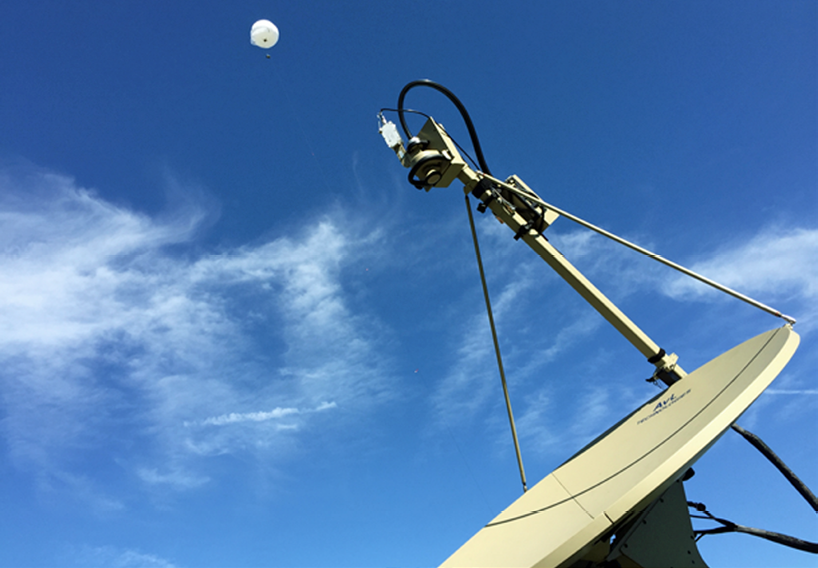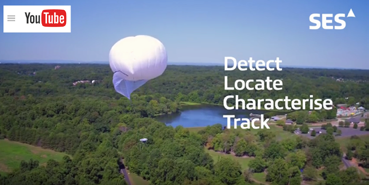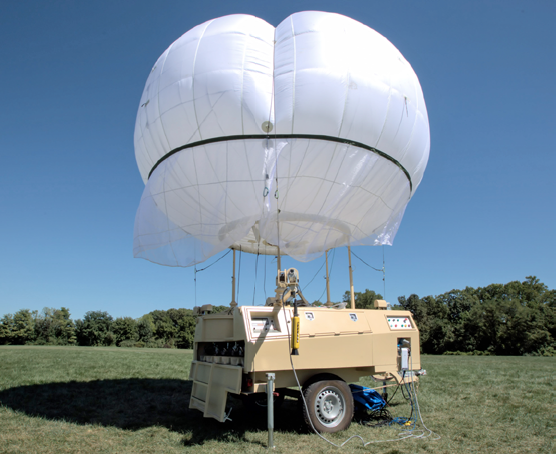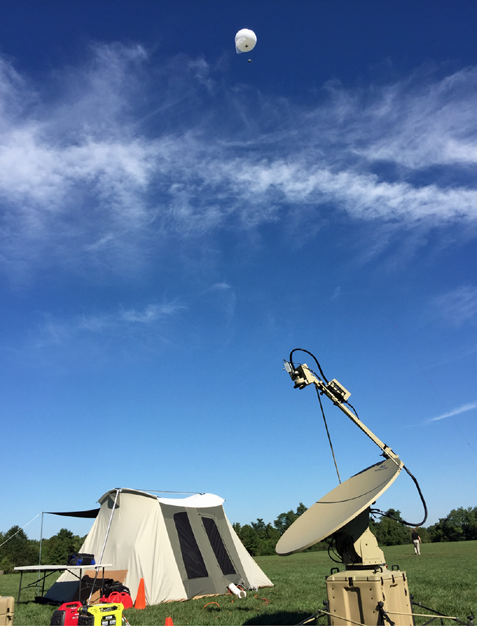Recently, I had the opportunity to witness a new and exciting solution being demonstrated that will augment the way the US Government (USG) approaches ISR, disaster response, homeland security, disaster recovery and connectivity in theater.

The new SES TPS platform is capable of supporting multiple government organizations, military branches and use cases across the entire C3ISR mission area. Photo is courtesy of SES.
This new solution is a transportable satellite-enabled, lighter-than-air inflatable aerostat that is capable of supporting multiple government organizations, military branches and use cases across the entire C3ISR (Command, Control, Communication, Intelligence, Surveillance and Reconnaissance) mission area.
The new TPS—or Tactical Persistent Surveillance—solution takes an inflatable aerostat platform, many of which are in use across the globe for reconnaissance, and adds connectivity via the SES satellite constellation.
This connectivity, by way of one of the world’s largest constellations of MEO and GEO satellites, adds significant capability to the aerostat and opens up a new range of possibilities in the field.
Capable of deploying in just minutes, and staying deployed for 60 days on a full provision of helium, the new TPS can do more than deliver video reconnaissance to a screen on the ground.
Using satellite connectivity, the TPS can beam real-time, HD video to any location on the planet. Working in tandem with other TPS solutions, this can provide situational awareness over a wide area to senior decision makers.
The revolutionary new SES TPS platform is capable of supporting multiple government organizations, military branches and use cases across the entire C3ISR mission area.
Depending on the payload attached to the aerostat, TPS can also be used to deliver broadband connectivity to those in the unit's immediate vicinity. This is where some of the truly amazing use cases might come into play.
Better & More
When disaster strikes connectivity is necessary for ensuring the safety of individuals on the ground. Communications are required to keep all parties collaborating and sharing information. That connectivity can truly be the difference between life and death for both citizens and first responders alike.
Leaders must be aware of the dangers that may stand in the way of a successful disaster response or rescue mission. TPS provides senior decision makers with enhanced situational awareness to those charged with providing help.
For instance, TPS units acting in concert can provide the real-time video intelligence or broadcast a 3G, 4G, WiFi, and/or WiMax signal over 20 miles—each effect creating a dome of connectivity powerful enough to deliver voice, data and video collaboration to those in the field.

This capability is critical in environments where terrestrial networks are knocked out. TPS offers private, secure, and resilient Command, Control and Communications (C3) even in environments where local infrastructure is degraded, destroyed, or oversubscribed.
Humanitarian & Refugee Relief
This particular use case is extremely important today with the refugee crisis impacting Syria and other nations as a result of political unrest and war.

With the ability to survey and broadcast video intelligence anywhere in the world, the TPS can enable coalition military forces to keep a watchful eye over refugee camps while enabling the delivery of basic services, additional security forces and resources when and where necessary.
With an aerostat in the air above the camp and a strong wireless network signal being broadcast around them, telemedicine and distance learning services can be offered to refugee camps via video teleconferencing (VTC). Additionally, based on the available payload, the TPS could effectively make life safer and better for refugees who are already dealing with difficult circumstances.
On The Move
TPS is capable of providing a less expensive means to rapidly deploy C3ISR capabilities as well as the means to gather and disseminate intelligence in theater.
Expeditionary forces that simply don’t have the resources to use terrestrial networks for voice, data and video connectivity can effectively utilize the TPS to construct a 1,000 foot cellular tower that provides them with all of their collaboration and information sharing needs within minutes. The TPS solution is easily towed as a single trailer.

The new TPS—or Tactical Persistent Surveillance—solution takes an inflatable aerostat platform, many of which are in use across the globe for reconnaissance, and adds connectivity via the SES satellite constellation. Photo is courtesy of SES.
This means that high-bandwidth IT services and capabilities can be deployed quickly and effectively anywhere coalition forces are stationed or on patrol. When deployed, the TPS can provide reconnaissance for miles at a fraction of the cost of a traditional UAV.
The satellite connectivity of TPS ensures that all video intelligence gathered can then be distributed anywhere in the world—even to senior military decision makers back at home. These are just a few of the almost unlimited use cases of the TPS.
A Piece Of Home
We’ve come to expect an incredible amount of connectivity as Americans. When we’re at home, we have high bandwidth connections and WiFi networks to allow us to connect mobile devices and smart devices from anywhere in and around our property. When we’re on the road, we expect that the only way to lose a cellular signal from our provider is to move far, far off the beaten path.
However, that’s not what our government employees, military personnel and coalition partners experience in the austere and disaster relief conditions when they find themselves abroad.
The demonstration of the satellite-enabled TPS was truly amazing to me. Seeing the aerostat deployed and the services that it could deliver made something abundantly clear—we’re entering an age where IT is critical and where a network can literally be deployed immediately in any place and at any time.
Additional information is available at these links...
SES launches surveillance and communications system
Tactical Persistent Surveillance (TPS) overview video

These articles are republished, courtesy of GovSat Report (ses-gs.com/govsat), and Executive Editor Ryan Schradin. He is a communications expert and journalist with more than a decade of experience and has edited and contributed to multiple, popular, online trade publications that are focused on government technology, satellite, unified communications and network infrastructure. His work includes editing and writing for the GovSat Report, The Modern Network, Public Sector View, and Cloud Sprawl.
His work for the GovSat Report includes editing content, establishing editorial direction, contributing articles about satellite news and trends, and conducting written and podcast interviews. Ryan also contributes to the publication’s industry events and conference coverage, providing in-depth reporting from leading satellite shows.
The GovSat Report is sponsored by SES Government Solutions (ses-gs.com/govsat).


